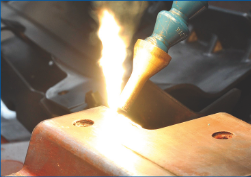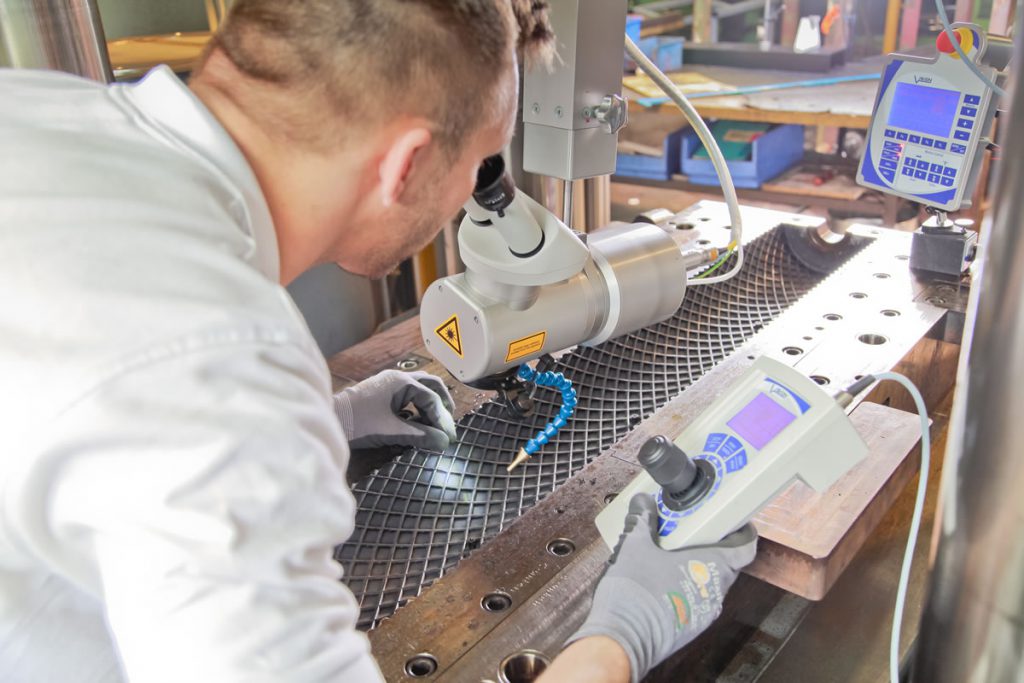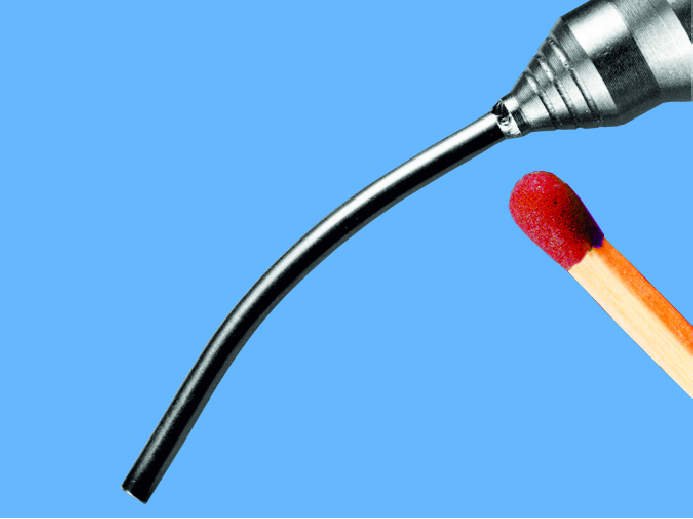

The laser is a very nice tool, because it can apply very high energy at a very small area. Due to that the light of the laser is near to parallel , you can focus all energy to a cross-section of much less than 1 mm. Such energy densities can melt near to any metal.
The most important fact is that the total heat, you bring into the workpiece is much less than with any other technology used for welding.
For Laser welding, we have to see two different kind of welding.
The classic welding is CW welding. It means the laser beam is all time on and heats and melt the area where it hits the metal. This is the most common used
technology for all deep welding process, where force is the major task . With CW welding and some KW of Laser power you can weld even 20 or more mm deep into the metal .




Pulsed welding is the second kind of Laser welding and the major technology used in Vision Laser machines. Pulsed welding has the same base technology as CW welding but the main difference is that the laser is switched on only for some ms . The pulses can be generated as single pulses or with adjustable frequency. Is the laser placed in a workstation, the frequency of the laser will be synchronized with the speed of movement.
Within each pulse there is also some KW of laser power on the workpiece. Due to the short time of the pulse, the laser melts only the surface of some µm to maybe 1 mm . Due to the pause between the pulses, the metal does not take all the time the power and is not heated as in CW welding process. In most applications you can touch the workpiece directly after welding. It sounds strange that you can melt metal on one side and on the other side the workpiece is not strongly heated. But it’s the fact for pulsed welding.
And exactly this is the main advantage of pulsed laser welding. Due to very low heating, you will not have deformation or dark colors from welding. Also the surface will be clean and shiny .
The spot size of the new FSS Lasers is from 100µm to 1,5 mm . In most lasers you have a CCD camera or a microscope to control the welding seam.
Laser welding is really easy to learn. It’s not comparable with WIG or TIC welding . Everybody that can look through the microscope can do the welding.
Vision Laser Workstations will allow very fast working and even with the automated tools, the automatic welding in production is no problem.
With pulsed welding we normally always speak about fine welding. The thickness of material can be wires with diameter of 20 µm or steel tubes with wall thickness of maybe 1 or 2 mm. You can weld membranes with thickness of maybe 20 µm or use depending on laser power wire with diameter of 1,2 mm as in normal welding by arc welding. Automatic wire feeder will allow somehow to use the Laser welder like a normal welding equipment.
With pulsed welding you can weld all metals and even join different materials to each other (not all but a lot).
From history pulsed lasers was lamp pumped YAG lasers. Vision manufactures such lasers near to 25 years now and we still sell them into the market. There exist still some applications where it makes sense to use this old technology. Especially when price matters.
In 2013 Vision came up with the new FSS technology which in the last years took more and more market.
This Link will lead you to a paper that will explain the difference between this two technologies
As next step, please look at the application sheets. Each sheet show you sample photos of a different industry . This sample photos will help you to open doors.
If you show the photos to the right industry, the people will at once understand about the parts they work with every day.
Vision does not have only catalog items. We can design based on our standard equipment and accessories production machines, that will exactly fulfill the customers task.